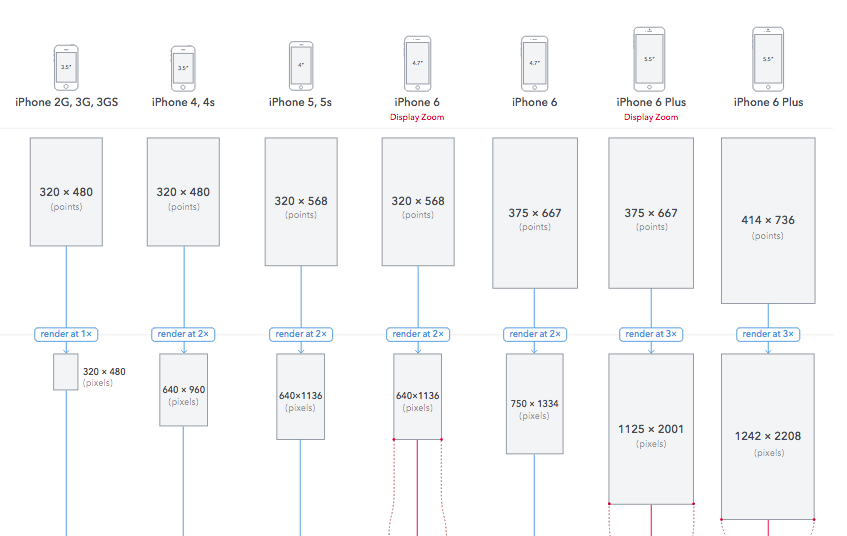Navigating the Display: Understanding and Resolving iPhone Screen Image Size Issues
Related Articles: Navigating the Display: Understanding and Resolving iPhone Screen Image Size Issues
Introduction
In this auspicious occasion, we are delighted to delve into the intriguing topic related to Navigating the Display: Understanding and Resolving iPhone Screen Image Size Issues. Let’s weave interesting information and offer fresh perspectives to the readers.
Table of Content
Navigating the Display: Understanding and Resolving iPhone Screen Image Size Issues

The iPhone’s display is a critical component of the user experience, offering a window into the digital world. However, instances where images appear too large on the screen can disrupt the visual harmony and user comfort. This phenomenon, often referred to as "image scaling issues," can arise from various factors, ranging from software glitches to user settings. Understanding the root causes and available solutions is crucial for restoring optimal display performance and ensuring a seamless user experience.
Causes of Image Scaling Issues
Several factors can contribute to images appearing larger than intended on an iPhone screen. Identifying the underlying cause is the first step towards resolving the issue:
- Software Glitches: Occasional software bugs or inconsistencies within the iOS operating system can lead to image scaling problems. These glitches might be temporary, resolved through system updates or device restarts.
- Display Resolution Mismatches: The iPhone’s display resolution plays a significant role in image rendering. If an image is designed for a different resolution, it might appear distorted or oversized on the iPhone’s screen.
- Incorrect Image File Format: Some image formats, particularly those with high resolutions or complex compression algorithms, might not render correctly on the iPhone. This can lead to images appearing larger than intended.
- Third-Party Apps: Applications downloaded from the App Store might have their own image scaling mechanisms. If these mechanisms are not properly calibrated, they can cause images to appear too large within the app.
- User Settings: Incorrect display settings, such as zoom level or text size adjustments, can inadvertently affect image scaling.
Troubleshooting and Resolution Strategies
Addressing image scaling issues requires a systematic approach, involving a series of troubleshooting steps and potential solutions:
- Restart the iPhone: A simple restart often resolves temporary software glitches that might be causing image scaling issues.
- Update iOS: Ensure your iPhone is running the latest version of iOS. Software updates often include bug fixes and optimizations that can address image rendering problems.
- Check Image File Format: Verify the image file format. If the image is in a format that is not supported or rendered correctly by the iPhone, try converting it to a more compatible format like JPEG or PNG.
- Adjust Display Settings: Review your iPhone’s display settings, including zoom level and text size. If these settings are adjusted to larger sizes, they can influence the scaling of images.
- Reinstall Apps: If the image scaling issue is confined to a specific app, reinstalling the app can resolve potential conflicts or inconsistencies with the app’s image scaling mechanisms.
- Contact Apple Support: If the problem persists, consider contacting Apple Support for further assistance. They can diagnose the issue and provide tailored solutions based on the specific model and operating system version.
Preventing Future Image Scaling Issues
While troubleshooting existing issues is important, implementing preventative measures can minimize the likelihood of encountering image scaling problems in the future:
- Maintain Software Updates: Regularly updating iOS ensures that your device is equipped with the latest bug fixes and optimizations, reducing the risk of software-related image scaling issues.
- Use Compatible Image Formats: When sharing or downloading images, prioritize compatible formats like JPEG or PNG, which are widely supported by iPhones and offer reliable image rendering.
- Optimize Image Resolution: Before transferring images to your iPhone, consider resizing them to match the device’s display resolution to avoid scaling inconsistencies.
- Monitor App Updates: Regularly update apps to ensure compatibility with the latest iOS version and prevent potential conflicts with image scaling mechanisms.
FAQs on iPhone Screen Image Size Issues
Q: Why do images appear blurry or pixelated on my iPhone screen?
A: Image blurriness or pixelation can be caused by several factors, including low-resolution images, incorrect image scaling, or display settings. Consider checking the image source, verifying image resolution, and adjusting display settings for optimal clarity.
Q: How do I adjust the image size on my iPhone?
A: Image size adjustments can be made within specific apps or through the iPhone’s general settings. Look for options to adjust zoom level, text size, or image scaling within the app’s settings or the iPhone’s accessibility settings.
Q: Can I change the iPhone’s display resolution?
A: The iPhone’s display resolution is fixed and cannot be manually adjusted by users. However, you can optimize image resolution before transferring them to your iPhone to minimize scaling issues.
Q: What if my iPhone screen is cracked?
A: A cracked screen can affect image rendering and display quality. If you suspect a cracked screen, contact Apple Support or a certified repair service for professional assessment and repair.
Conclusion
Image scaling issues on an iPhone can be frustrating, but understanding the underlying causes and implementing effective troubleshooting strategies can restore optimal display performance. By staying vigilant with software updates, choosing compatible image formats, and optimizing image resolution, users can minimize the likelihood of encountering these problems. Ultimately, a seamless display experience contributes to a more enjoyable and productive iPhone experience.








Closure
Thus, we hope this article has provided valuable insights into Navigating the Display: Understanding and Resolving iPhone Screen Image Size Issues. We appreciate your attention to our article. See you in our next article!
